Sentosa, or the island of peace and tranquility and now also of posh homes, fancy boats and overpriced hotels, was once the rather sinister sounding Pulau Blakang Mati – the island of death at the back. No one seems quite sure of the origins of the name, although there have been several suggestions including one that is tied to the legend that Pulau Tekukor to Blakang Mati’s south had once seen duels to the death pitting Bugis warriors against ones from the Malay world.

Ruins on Mount Serapong.
It was in putting up a deference to violent confrontation that was to be Blakang Mati’s purpose for a large part of British rule. Strategically positioned, it served not only as a natural breakwater for the new harbour. Endowed with high points, it was only a matter of time before guns to protect the harbour from seaward attack were positioned on the island. The idea was in fact already mooted by William Farquhar, Singapore’s first resident, as early as 1820 – a year after the British arrived.
The first military installations would however only come up in the late 1800s. Undeterred by outbreaks of malaria and “Blakang Mati fever”, fortifications requiring extensive use of concrete – then newly introduced to Singapore, were constructed at the end of the 1870s on Mount Serapong – Blakang Mati’s highest point. It would only be in 1885 that work started on the installation of coastal artillery on Serapong. Two 8 inch guns were installed with supporting infrastructure such as casemates built into the terrain, which contained magazines, accommodation and other working spaces.
By 1912/13, the guns at Serapong Battery would be upgraded to 9.2 inch calibre guns and a separate Spur Battery, also equipped with a 9.2 inch gun added. These guns would be decommissioned in the later half of the 1930s when 9.2 inch guns at Fort Connaught were installed. Two 6 inch guns would however be placed on the spur (renamed Serapong Battery) after a review in 1936 and this was operational up to the final days before the fall of Singapore. Both guns were spiked and destroyed, No. 2 on 14th and and No. 1 on 15th February 1942.
With the development of Sentosa today, it may perhaps be surprising that extensive remnants of the installations scattered over Mount Serapong – just a stone’s throw away from the luxury developments at Sentosa Cove – can still be found today. The remnants include a underground magazine built for the 9.2 inch spur battery that was converted for use for Serapong Battery’s 6 inch No. 1 Gun, the battery’s gun emplacements, as well as several other support structures built in the 1930s for the battery. What may be more surprising are casemates, thought to have been built around 1885 can be found along with mountings for the 9.2 inch guns and best of all, a bunker 20 metres under the casemates that served as the Blakang Mati Command Centre. The bunker, with several chambers is in a damaged condition and has a vertical escape shaft at the top of which is a hatch.
The National Heritage Board, through a series of guided tours to mark the 75th Anniversary of the Fall of Singapore, offers an excellent opportunity to learn more about and see these remnants. One tour, Fort Serapong @ Fort Siloso, for which 3 sessions on the 25 February, 4 and 11 March (from 9.30 am to 12 noon) will be held. Places are limited. More on the tours and other programmes can be found below.
For more on the guns at Serapong, on Sentosa and also across Singapore, do visit Peter Stubbs excellent FortSiloso.com site.
Photographs of the ruins on Mount Serapong
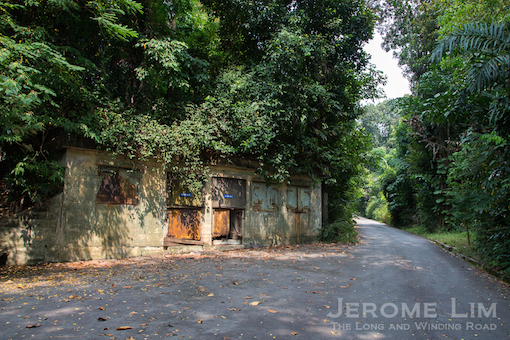
On the spur, the Gun No. 1 Gun duty personnel rooms and gunners’ shelter.

The collapsed structure of the 6 inch Gun No. 1 emplacement on the spur.

The underground 6-inch Gun No. 1 magazine on the spur, converted from that for the 9.2 inch spur battery.

Inside the Other Ranks shelter in the magazine.
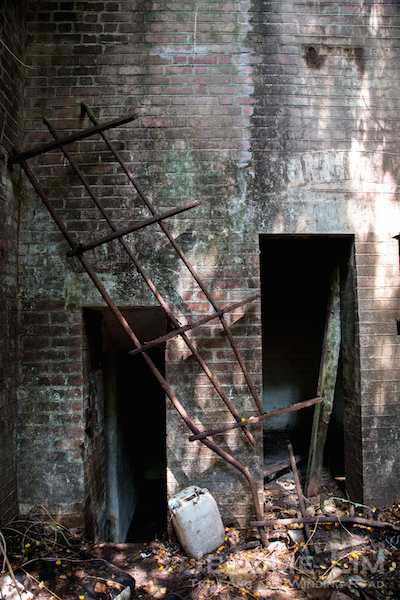
In the ‘courtyard’ of the magazine.

Inside the magazine.

The 1936 kitchen complex.

More of the kitchen complex.
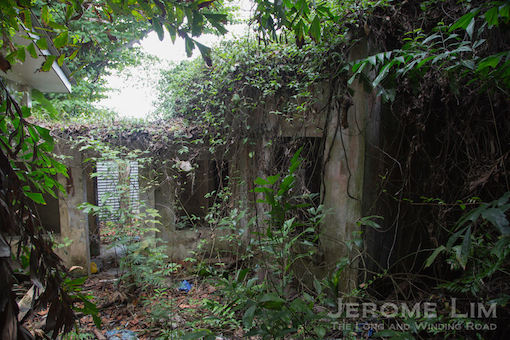
Another view.
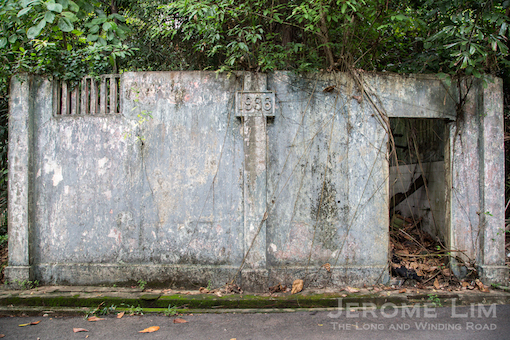
The 1936 bathroom.

Fort Connaught’s Battery Command Post (BCP), positioned on the highest point.

Another view.
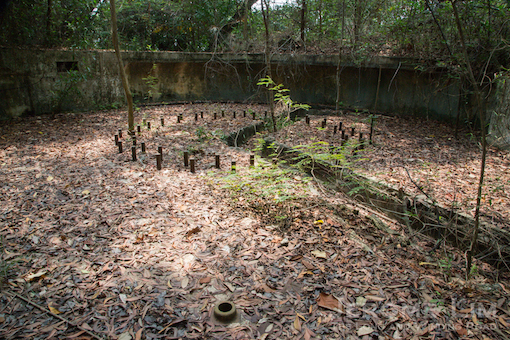
9.2 inch gun mounting studs.
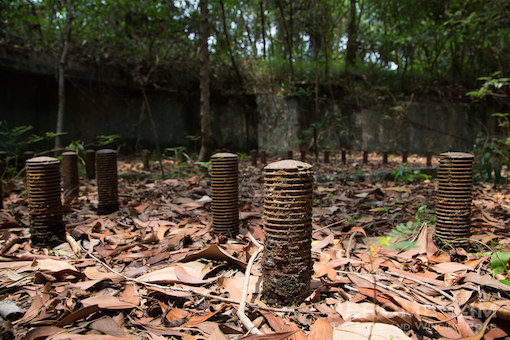
A close-up.

The 9.2 inch shell hoist.

Nature reclaiming the space.

Stairs at the casemate.

Space inside the casemate.

Part of the casemate.
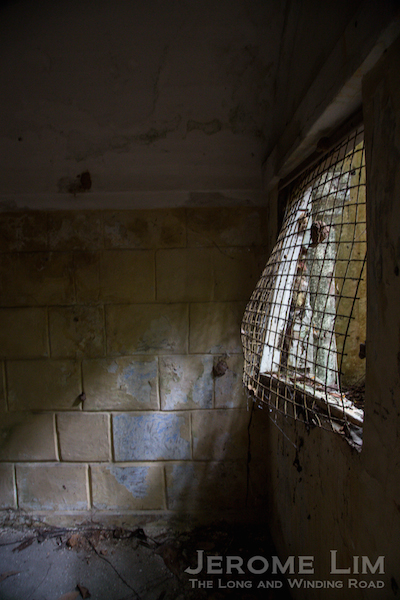
Inside a casemate space.

Another collapsed structure.

A underground reservoir.

Magazine inside the casemate.

Another view.

The Blakang Mati Command Centre.

Another view.

The view up the escape shaft.

The hatch at the end of the escape shaft.
Commemoration of the 75th Anniversary of the Fall of Singapore
This 15 February will mark 75 years since the Fall of Singapore, an event that brought about 3½ years of occupation by the Japanese and a period of immense hardship. The National Heritage Board is commemorating the anniversary with “Battle for Singapore – Years under the Sun Empire: Tales of Resilience” that will see guided tours, talks and activities organised by various Museum Roundtable museums from 16 February to 12 March.
There would be 12 different tours with a total of 49 tour runs to look out for. These will cover 11 World War II related sites and structures, including some rarely opened places such as the former Fort Serapong and the former Command House. There is an opportunity to also hear accounts of battle and survival and learn about the contributions and courage of the local population to the effort to defend Singapore.
Also to look forward to is the re-opening of the Former Ford Factory, which has been closed for a year-long revamp. This will reopen to the public on 16 February 2017 and see a new exhibition gallery with never-been-seen-before archival materials, There is also an interactive component offering a more immersive account of the days of war and suffering. Special exhibitions and programmes are also being put up by the Army Museum, Battlebox, the Singapore Discovery Centre. the Eurasian Heritage Centre, and Reflections at Bukit Chandu. More information is available at www.museums.com.sg. Sign-ups for the Battle for Singapore 2017 programmes can be made at this link: https://www.eventbrite.sg/o/national-heritage-board-9384989257 (available from 6 February 2017 at 10.00am onwards). Slots are limited and will be allocated on a first-come first-served basis.





































































Nice article and photos Jerome. Thanks for the plug for the website.